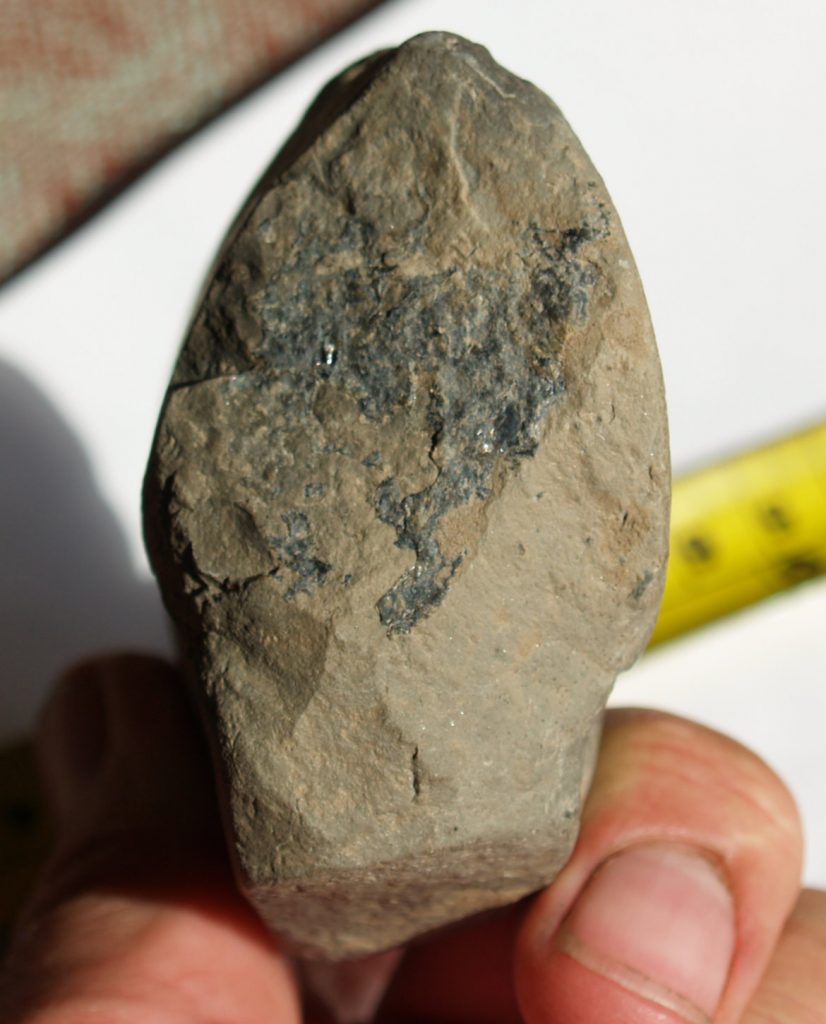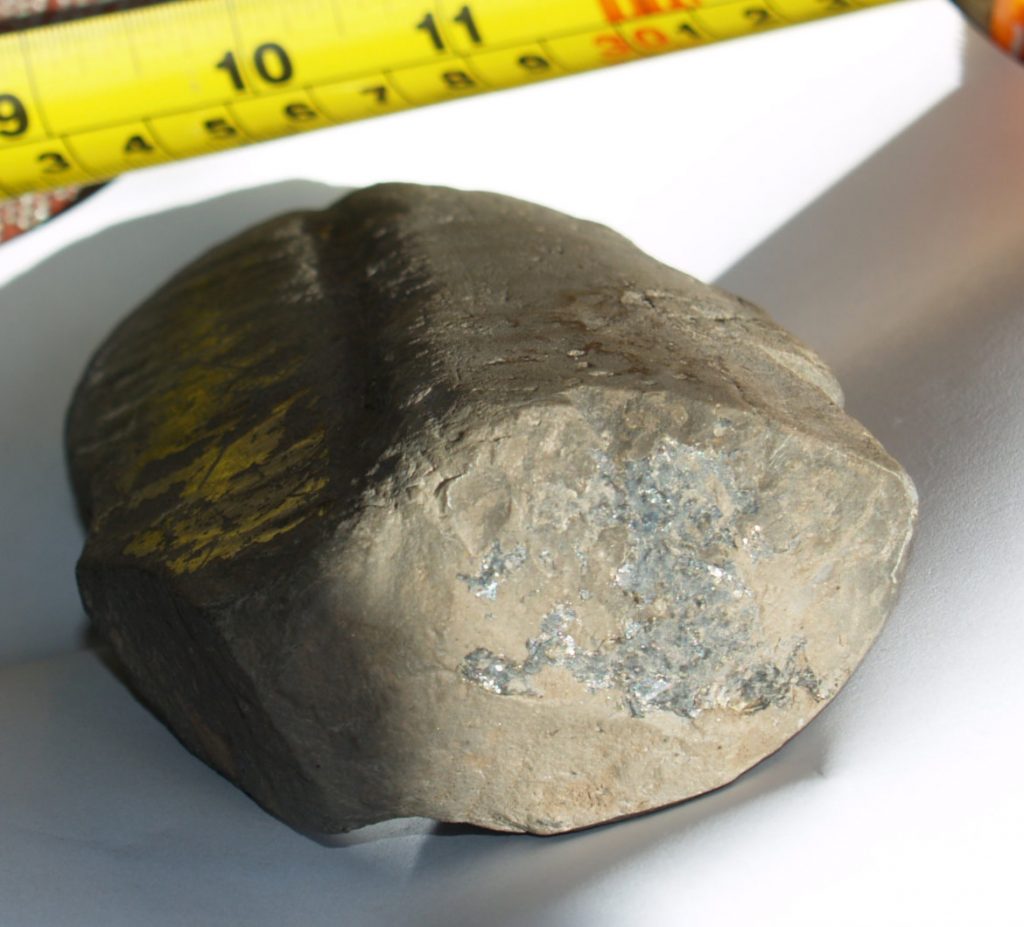Fossils
Fossils can be found at any time of the year but more are uncovered and better quality ones are found after gales. Here are a selection of fossils I have found. All came from the Yorkshire coast between Staithes and Hornsea. Even if conditions are poor for beachcombing as they are in much of the summer you can still find fossils among the piles of pebbles and in the rock strata at the base of the cliff. All the fossils on this page were found by me on the Yorkshire coast while just walking on the beach and keeping an eye open for anything interesting.
Belamnites
Belamnites are one of the most obvious fossils. They look like stone bullets or parts of stone bullets. They can be found on bedrock in places , on their own amongst pebbles, sticking our of clay or in a rock with other fossils. they come in a variety of shapes and sizes from which experts can deduce their age. they are the hard part of a squid like creature which existed from 100 million years ago to 50 million years ago. There were many different species.
Sea Urchins
I was lucky to find these two sea urchin fossils about 100 yds apart about two weeks apart near Barmston. There had been a gale so a lot of the cliff would have been eroded. I must have found them before they were rolled around too much as a lot of detail was still there.
Ammonites
These can be found at a number of places along the coast. Some in the bedrock, some as loose pebbles or hiding in the middle of smooth pebbles. In the latter case you need to crack them open with a hammer preferably a geologists hammer. They existed for millions of year and their nearest living relatives are the squids and cuttlefish. There were many species and come in many forms and geologists can use them to age a rock.
Odd fish fossil?
I found this fossil sticking out of the boulder clay cliff near Skipsea. It had some interesting features and for a while I thought it was a section of a fish (head and tail missing) as it seemed to have a lateral line on each side and a cross section which looked like the body of a fish. I sent photos of it to the natural History museum and they said no it was not a fish. It was some type of shellfish probably a small section of the narrow section of a giant bivalve with the edges snapped off. What I thought might be the skin of the fish was actually the inner coating of the shell.
Strange orange marks in chalk

If you look carefully at the chalk bedrock around Flamborough head you will see feint ornage marks in the rock which I think are fossils of something. I am not sure what this one is of. It is about 6 inches across



















